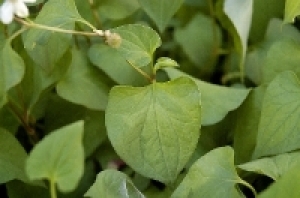Fresh herbs are essential to Vietnamese cuisine; their flavors perfume countless foods. Pinched off their stems or chopped, raw leaves are tucked into rice paper rolls, dropped into hot soup, mixed into cool salads, stir-fried with noodles and wrapped up with grilled morsels in lettuce. Vietnamese people enjoy large quantities of fresh herbs, and in fact, herbs are collectively known as rau thom, which means “fragrant vegetable.”
Consider their role in pho noodle soup: The ubiquitous national dish of Vietnam depends on the last-minute addition of herbs, without which the flavors would seem off and the dining experience would feel incomplete.
Heady beef pho, redolent of star anise and cinnamon, benefits from the bright notes of chopped cilantro that the cook sprinkles atop the hot broth right before the bowl leaves the kitchen. Then at the table, there are more herbs involved as diners add their personal touches with torn leaves of Thai basil, culantro or mint; dropping in extra herbs while working toward the bottom of the bowl is fine too.
Fresh herbs are integral to the layering of flavors in Vietnamese cuisine, as well as the “have it your way” Vietnamese dining philosophy.

Aside from contributing to the symphony of flavors, some fresh herbs help for digestion, while others are Vietnamese remedies for fever, colds and headaches. When you combine the herbs with chiles, spices and aromatics such as ginger, galangal and turmeric, which all boast their own health benefits, you have a phytochemical mix.
Equally bracing are the leaves of fish mint (Vietnamese named diep ca), also called bishop’s weed, which give a tangy, pungent edge to boldly flavored food such as grilled beef with lemon grass. Cilantro lovers will revel in spear-shaped Vietnamese coriander (rau ram, Polygonum odoratum), which lends its peppery cilantro backbite to Vietnamese soups and salads; rau ram is also popular in other Southeast Asian countries, particularly Malaysia and Singapore, where it is called daun kesom and daun laksa.
Thomas PRADO for www.buddhachannel.tv




